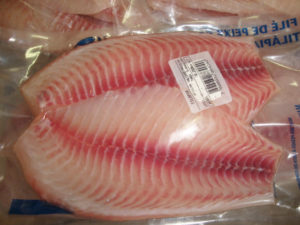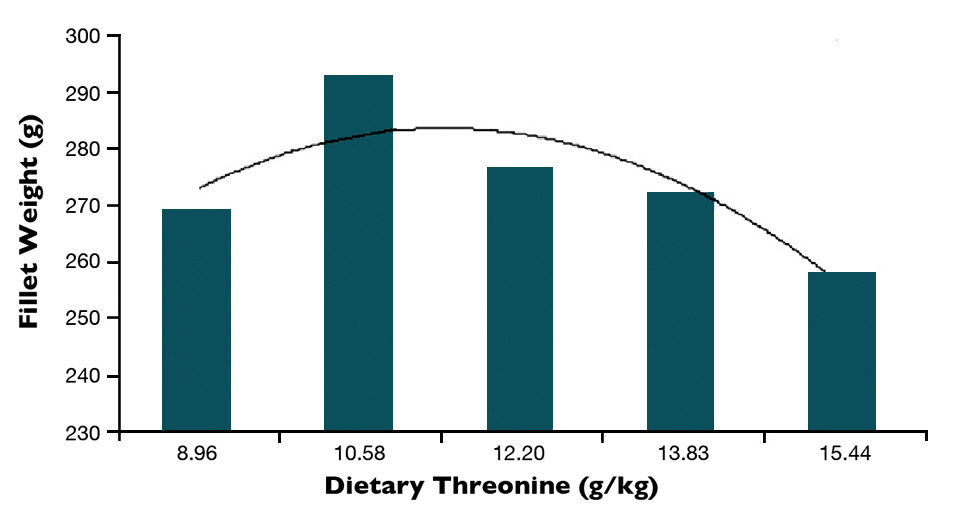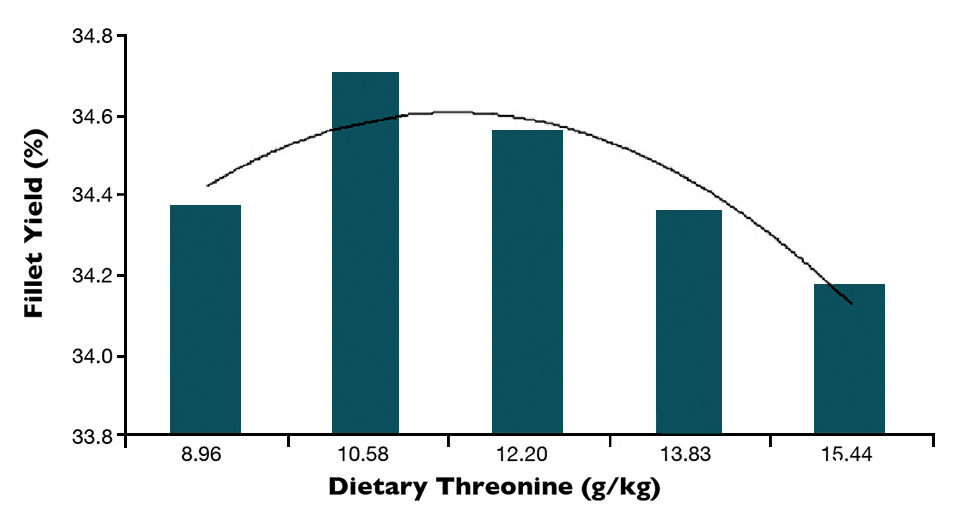Can be used to maximize fish growth, feed efficiency, meat production

Tilapia culture has played an important role in the economy of Brazil, changing from traditional culture in earthen ponds to more intensive culture in cages. It is estimated that approximately 150,000 metric tons per year of this species are cultured in Brazil, making the country the most important producer in South America.
When fish are reared at high densities, nutritionally complete diets are necessary to support growth performance and fish health. Recently, tilapia nutrition and feeding – particularly the importance of amino acid nutrition for tilapia under intensive culture – have received special attention by many research groups in Brazil.
Fishmeal production has remained stable, and alternative ingredients such as feather meal, blood meal, and meat and bone meal protein have been used as substitutes for fishmeal in commercial diets for Nile tilapia in Brazil. However, the apparent digestibility coefficients for protein and amino acids in these ingredients are lower when compared to values for soybean meal.
Threonine
Threonine is the major component of mucin in the small intestines and skin of tilapia, and its supplementation is important for maintenance, growth and fish health. The threonine requirement for maintenance is high compared to other amino acids due to its high concentrations in intestinal and skin secretions. For this reason, threonine is very important for large fish, because the requirement for maintenance is much higher.
Threonine has an important influence on skeletal muscle, where it can change myoblast proliferation and differentiation, the composition of cytoplasmic organelles, the number and diameter of white and red muscle fibers, and patterns of gene expression related to muscle development. Involved in protein synthesis, dietary threonine has a high influence on fish growth and fillet yield.
Growth trial
To evaluate the effects of dietary threonine under commercial conditions, a trial was set up in the Paranapanema River in Brazil. Nile tilapia of 563.3 ± 15.9-g initial weight were randomly stocked into 20, 1,000-L net cages at 30 fish/cage and fed extruded isocaloric (3,043 kcal digestible energy/kg) and isoproteic (260 g/kg of digestible protein) diets containing digestible threonine values of 8.96, 10.58, 12.20, 13.83 and 15.44 g/kg. Fish were hand fed three times daily to apparent satiety for 30 days.
Results
Survival at the end of the experiment was about 98 percent, and no difference was observed among treatments. No statistically significant differences in daily weight gain and feed conversion were observed.
The dietary threonine:lysine ratios affected net protein utilization, with the best value at 11.54 g/kg of threonine (Table 1). For fillet weight and fillet yield, the maximum values were estimated at 11.43 and 11.45 g/kg of threonine, respectively (Figures 1 and 2). Diets containing 8.96-15.44 g/kg of threonine did not affect fish growth, feed conversion and survival. However, for maximal meat production of Nile tilapia from 550 to 800 g, the dietary threonine requirement is 11.40 g/kg.
Furuya, Mean values of Nile tilapia, Table 1
| Parameter | Dietary Threonine (g/kg) 8.96 | Dietary Threonine (g/kg) 10.58 | Dietary Threonine (g/kg) 12.20 | Dietary Threonine (g/kg) 13.83 | Dietary Threonine (g/kg) 15.44 | Standard Error | P Value |
|---|
Parameter | Dietary Threonine (g/kg) 8.96 | Dietary Threonine (g/kg) 10.58 | Dietary Threonine (g/kg) 12.20 | Dietary Threonine (g/kg) 13.83 | Dietary Threonine (g/kg) 15.44 | Standard Error | P Value |
|---|---|---|---|---|---|---|---|
| Initial weight (g) | 558.75 | 565.5 | 566.5 | 572.25 | 553.50 | 3.26 | ≥ 0.05 |
| Final weight (g) | 783.74 | 829.31 | 786.79 | 769.96 | 761.29 | 3.34 | ≥ 0.05 |
| Daily weight gain (g) | 7.49 | 8.79 | 7.34 | 6.59 | 6.93 | 0.03 | ≥ 0.05 |
| Feed-conversion ratio | 1.47 | 1.26 | 1.51 | 1.68 | 1.60 | 0.07 | ≥ 0.05 |
| Net protein utilization (%) | 41.94 | 50.84 | 46.57 | 39.58 | 42.07 | 2.01 | 0.036 |


Perspectives
The use of crystalline amino acids in diets for tilapia must be based on the global benefits on fish growth, meat production and economic viability. For fillets, the most important product from tilapia aquaculture, L-threonine should be used to maximize fish growth, feed efficiency and meat production. Individual amino acids digestibility values should be determined for each ingredient to establish properly balanced diets for the sustainable and competitive growth of world tilapia production.
(Editor’s Note: This article was originally published in the July/October 2013 print edition of the Global Aquaculture Advocate.)
Authors
-
Dr. Wilson Massamitu Furuya
Universidade Estadual de Ponta Grossa
Departamento de Zootecnia
Av. Carlos Cavalcanti, 4748
Uvaranas, CEP 84030-900
Ponta Grossa, Paraná, Brazil -
Mariana Michelato
Universidade Estadual de Maringá
Programa de Pós-Graduação em Zootecnia -
Dr. Valéria R. Barriviera Furuya
Universidade Estadual de Ponta Grossa
Departamento de Zootecnia
Tagged With
Related Posts

Health & Welfare
Amino acid supplementation reduces protein levels in pangasius diets
Trials show that supplementation with amino acids could reduce protein levels from a typical 28 percent to 23 percent in pangasius diets.

Aquafeeds
Insect meals: Novel protein, fat sources for farmed shrimp
Poor-quality ingredients can’t become good-quality ingredients. Quality protein is essential for the healthy growth of any omnivorous or carnivorous aquaculture species. Insect meals seem to fill this need, and their mass-scale production appears to be sustainable.

Aquafeeds
Pangasius diet trials show promise of DDGS
A feeding trial incorporated corn distillers dried grains with solubles (DDGS) as an energy and protein source in starter and grower diets for pangasius. Results showed excellent fish growth performance, and no negative effects on mortality, fillet yield or fillet color.

Intelligence
Adding value to tilapia to tap into U.S. market
New markets for tilapia and expansion of existing ones can be created by planning and implementing properly designed geographic strategies to meet discriminating consumer preferences. Low labor costs in most producing countries promotes value-adding by the production of fresh fillets.


